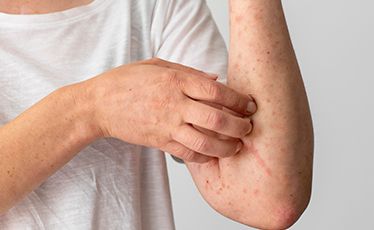+62 811-1300-9840
What is ADHD in Children? Recognize the Symptoms and How to Treat Them

Has been reviewed and approved by our doctor.
Often, parents feel worried when they see their children who are too active and have difficulty sitting still in class, have difficulty concentrating and have difficulty completing assignments, or even often forget and often lose things. Behavior like this may indicate the presence of a condition called ADHD in the child.
Attention Deficit Hyperactivity Disorder (ADHD) is a neurodevelopmental disorder that is often diagnosed in children. Children with ADHD often have difficulty attending lessons, interacting with peers, and carrying out daily activities.
Symptoms of ADHD
Many children have found it difficult to focus or are restless. However, in children with ADHD, symptoms such as hyperactivity, impulsivity, and difficulty concentrating are much more intense and occur frequently, which can interfere with their daily activities both at home and at school, and in socializing. There are three main types of ADHD:
Lack of Focus
Children with this type of ADHD often have difficulty focusing, organizing tasks, and completing work. They are easily distracted and often forget important things. Other characteristics that often appear include:
It's difficult to concentrate on one thing for a long time.
Often forgets important things, such as assignments, appointments, or personal items.
Difficulty managing one's own time, tasks, and belongings.
The mind is easily distracted by other things, making it difficult to complete tasks.
Tends to avoid tasks that require great mental effort.
Often makes mistakes due to lack of attention to detail.
Frequently does not follow instructions or complete tasks correctly.
Hyperactive-Impulsive
Children with hyperactive-impulsive type of ADHD are often very active and have difficulty staying still. They have a lot of energy and often move around aimlessly. In addition, they tend to act impulsively, without thinking about the consequences. Other characteristics that are often seen are
Cannot stay still and keep moving, such as shaking your legs or arms.
Difficulty sitting still, often standing or changing positions when sitting.
Often running around or climbing where they shouldn't be, such as on tables or chairs.
Too active when playing or doing activities that should be relaxing.
Always moving and looks like he never gets tired (full of energy).
Likes to talk constantly.
Often interrupts other people's conversations before they finish.
Difficult to wait and often step over other people such as when queuing.
Often disturbs others and does not respect other people's boundaries, such as using other people's things without permission.
Combination
Of all the types of ADHD, the combined type is the most common and frequently encountered. Children with this type usually show symptoms of a combination of problems focusing and hyperactive-impulsive behavior.
To confirm that a child has ADHD, the typical symptoms of this disorder must have appeared since childhood and lasted for a long time, usually more than six months. These symptoms must also affect daily life in various aspects, such as at home, school or other social environments.
Causes of ADHD
Experts do not yet know for certain the main cause of ADHD. However, several factors that may play a role include
Genetics: A family history of ADHD can increase the risk of ADHD.
Changes in brain structure: Research shows that there are differences in brain structure in children with ADHD.
Environmental factors: Exposure to certain substances during pregnancy or childhood can trigger ADHD.
How to Treat Children with ADHD
Treatment of children with ADHD usually involves a combination of behavior and medication. In early childhood, the recommended initial treatment is to train parents and teachers to implement certain strategies. One effective therapy for children with ADHD is Parent-Child Interaction Therapy (PCIT), which helps improve the relationship between children and their parents.
ADHD treatment aims to help children manage symptoms. Some treatment options include
Behavior Therapy
Parent training in behavior management: For young children, parents are taught how to manage their child's behavior. For example, making a regular schedule and giving rewards when children behave well.
Play or talk therapy: When children are older, they can be invited to play or talk to express their feelings.
Treatment
Stimulant drugs: These drugs can be the first choice because they can improve concentration and reduce impulsivity, such as dextroamphetamine and methylphenidate.
Non-stimulant drugs: This type of drug generally works more slowly but the effects can last longer, such as atomoxetine or clonidine.
Proper diagnosis and treatment of ADHD is very important to help children deal with the problems or symptoms they suffer from. With proper treatment, children with ADHD can successfully carry out activities like other friends at school, interact with peers, and have a good quality of life.
If you feel that your little one is showing symptoms of ADHD, immediately consult a doctor Pediatric Specialist Of Premier Jatinegara Hospital. With a team of experienced specialists, we can help diagnose and provide appropriate treatment for children with ADHD.
Contact Us
For information and to make appointment


















